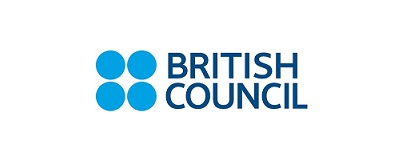
Canada
Geographic Location
The geography of Canada is vast and diverse. Occupying most of the northern portion of North America (41% of the continent), Canada is the world’s second largest country in total area after Russia. Canada spans an immense territory between the Pacific Ocean to the west and the Atlantic Ocean to the east and the Arctic Ocean to the north (hence the country’s motto “From sea to sea”), with the United States to the south and northwest, and the Arctic Ocean to the north; Greenland is to the northeast. Off the southern coast of Newfoundland lies Saint-Pierre and Miquelon, an overseas collectivity of France. Canada is slightly less than three-fifths as large as Russia, nearly 1.2 times larger than Australia, slightly larger than Europe, and more than 40 times larger than the UK. In total area, Canada is slightly larger than both the U.S. and China;
Province and Territories
The major difference between a Canadian province and a territory is that provinces are jurisdictions that receive their power and authority directly from the Constitution Act, 1867, whereas territories derive their mandates andPowers from the federal government. Currently, the ten provinces are Alberta, British Columbia, Manitoba, New Brunswick, Newfoundland and Labrador, Nova Scotia, Ontario, Prince Edward Island, Quebec, and Saskatchewan, while the three territories are Northwest Territories, Nunavut, and Yukon.
Time Zone
Canada uses six primary time zones. From east to west they are Newfoundland Time Zone, Atlantic Time Zone, Eastern Time, Central Time Zone, Mountain Time Zone, and the Pacific Time Zone.
In most of Canada Daylight Saving Time begins at 2:00 a.m. local time on the second Sunday in March. On the first Sunday in November areas on Daylight Saving Time return to Standard Time at 2:00 a.m. During Daylight Saving Time turn your clocks ahead one hour. In Newfoundland and Labrador Daylight Saving Time begins one minute after midnight (12:01 a.m.) local time on the second Sunday in March. On the first Sunday in November areas on Daylight Saving Time return to Standard Time at one minute after midnight (12:01a.m.) local time. The names in each time zone change along with Daylight Saving Time. Eastern Standard Time (EST) becomes Eastern Daylight Time (EDT), and so forth. Some areas of Canada not using Daylight Saving Time include, Fort St. John, Charlie Lake, Taylor and Dawson Creek in British Columbia, Creston in the East Kootenays, and most of Saskatchewan (except Denare Beach and Creighton). Previously, Canada had observed Daylight Saving Time from the first Sunday in April until the last Sunday in October. However, through legislation passed in 2006, Daylight Saving Time will begin three weeks earlier on the second Sunday in March and end on the first Sunday in November.
Population
Canada has the highest per capita immigration rate in the world, driven by economic policy and family reunification; Canada also accepts large number of refugees. In 2009, between 240,000 and 265,000 new migrants are expected to arrive in Canada. Canadian population has reached 31,592,805 people as on July 2008
History
In Canada, ‘Indians’ are known as ‘Aboriginal People’, ‘Native People’, or ‘People of the First Nations’. Current archaeological evidence indicates that Natives first arrived in North America 40,000 years BCE (Before the Common Era) by crossing a land bridge which had formed between Asia and Alaska during the latest Ice Age. In 1535, two Indian Youths told Jacques Cartier about the route to “kanata.” They were referring to the village of Stadacona; “kanata” was simply the Huron-Iroquois word for “village” or “settlement.” But for want of another name, Cartier used “Canada” to refer not only to Stadacona (the site of present day Quebec City), but also to the entire area subject to its chief, Donnacona. The name was soon applied to a much larger area: maps in 1547 designated everything north of the St. Lawrence River as “Canada.”
Cartier also called the St. Lawrence River the “rivière de Canada”, a name used until the early 1600s. By 1616, although the entire region was known as New France, the area along the great river of Canada and the Gulf of St. Lawrence was still called Canada. Soon explorers and fur traders opened up territory to the west and to the south and the area depicted as “Canada” grew. In the early 1700s, the name referred to all lands in what is now the American Midwest and as far south as the present day Louisiana. The first use of “Canada” as an official name came in 1791 when the Province of Quebec was divided into the colonies of Upper and Lower Canada. In 1841, the two Canada’s were again united under one name, the Province of Canada. At the time of Confederation, the new country assumed the name of Canada.
Language
A multitude of languages are spoken in Canada. According to the 2006 census, English and French are the preferred language of 67.1% and 21.5%, respectively. English and French are recognized by the Constitution of Canada as “official languages,” which means that all laws of the federal government are enacted in both English and French and that federal government services are required to be available in both languages. The five most widely-spoken non-official languages are Chinese (the home language of 2.6% of Canadians), Punjabi (0.9%), Spanish (0.7%), Italian (0.6%), and Dutch (0.6%). Aboriginal languages, many of which are unique to Canada, are spoken by less than one percent of the population, and are mostly in decline.
Culture
Culture is the soul of the people. It varies from area to area in a country as big as Canada but through a national review of themselves, Canadians develop a recognition of symbols, likes, dislikes, events, traditions and just living life everyday, which come to strike a common chord among most. This might be the music, the art, TV shows that are uniquely Canadian, ways of doing business, dealing with tough weather or a simple preference for certain types of food. These things and more all make up the culture of a country
Landmark
Canada is one of the top ten destinations favoured by international travellers – with cities like Vancouver, Toronto, Edmonton, Calgary, Montreal and Halifax it is easy to see why. Desired mainly for the breathtaking scenery and the famous hospitality of Canadians, Canada has more to offer than you would imagine.
Canada’s best known tourist attractions: CN Tower — Canada Olympic Park — West Edmonton Mall — Vancouver Aquarium — Montréal Olympic Stadium — Skylon Tower — Pier 21 — H.R. MacMillan Space Centre.






